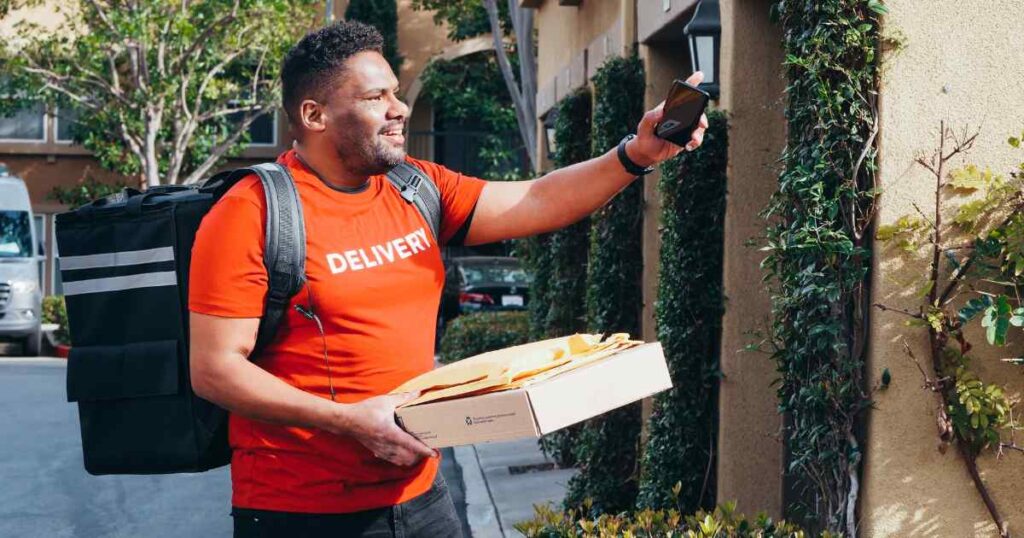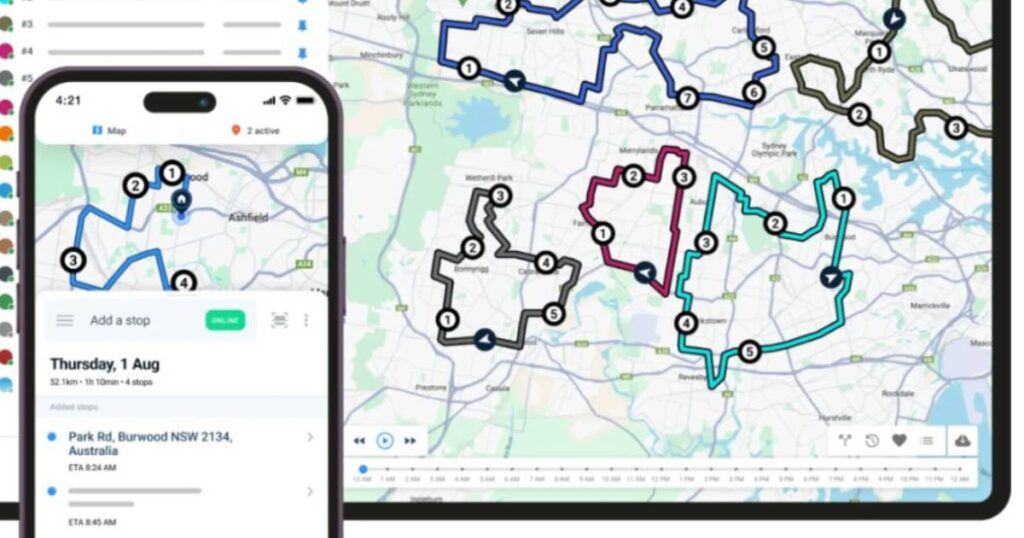Real-time tracking is the recipe your business can use to handle deliveries.
Whether you’re running a restaurant, managing a trucking fleet, or coordinating furniture deliveries, real-time tracking can feel like a logistical lifesaver.
But what exactly does it solve? Let’s look into the seven challenges it tackles and why you wonder how you ever lived without it.
Where are my deliveries? The mystery of lost shipments
Picture this: It’s Friday night, and you’ve got a packed schedule of pizza deliveries. One of your drivers is late, the customer is calling, and you’re stuck wondering where the driver is. Sound familiar?
With real-time tracking, this guessing game is over. Delivery management software gives you GPS-powered updates on the current location of your fleet, so you always know where every vehicle is.
No more blind spots. No more irate customers wondering if their pizza got eaten by the Bermuda Triangle.
Picture this: You own a pizza delivery business. It’s game night, and orders are coming in fast. One of your drivers hits traffic, and another accidentally heads to the wrong address. Chaos, right?
With real-time tracking, you quickly reroute the stuck driver, send the second driver the correct address, and update your customers with revised ETAs.
The result? Pizzas delivered, happy customers, and a stress-free you.
Logistics insight: Real-time tracking means you can give your customers accurate ETAs, making them feel valued and informed.

GPS real-time tracking saves you from route inefficiencies
Ever had a driver take the scenic route… by accident? It’s not just frustrating; it’s costly. Wasted fuel, lost time, and unhappy customers are a recipe for disaster.
Real-time tracking helps optimize routes in real-time (hence the name). Real-time tracking uses map interfaces to suggest faster alternatives and visualize routes.
Stuck in traffic? The software can suggest a faster alternative. Need to add a last-minute delivery?
No problem—re-route the driver seamlessly. You’ll save money on fuel and make more deliveries on time.
Statistics to impress: Businesses using route optimization save up to 30% on fuel costs, according to a study by McKinsey & Company.

The vanishing act: Accountability problems
When a delivery goes wrong, the blame game often begins.
Was it the driver’s fault? The dispatcher’s? Maybe the customer gave the wrong address? Without data, it’s hard to know.
Real-time tracking creates an accountability trail. Every stop, start, and delay is logged. If something goes sideways, you’ve got the data to figure out why.
Transparency builds trust, both with your team and your customers.
Logistics insight: Data doesn’t lie. Use it to improve performance and solve disputes quickly.
Real-time tracking: Customers are in the era of “now”
Let’s face it—Amazon has spoiled everyone with the speed of delivery. Customers now expect lightning-fast deliveries and constant updates. If you’re not providing this, you’re behind.
Real-time tracking lets you keep up. You can send customers live updates on their delivery’s status. Got a delay?
They’ll know immediately. An app can provide live updates and alerts, enhancing the tracking experience and improving accessibility for users on mobile devices.
This level of communication can turn a potentially angry customer into a patient one.
Logistics insight: 93% of customers want to stay informed throughout the delivery process, according to a BT Business report.

Fleet Management: Juggling too many deliveries
If you’re managing a fleet of trucks, you know the headache of coordinating drivers, vehicles, and schedules. It’s like herding cats, but less fun.
Real-time tracking simplifies fleet management.
Need to check which driver is closest to a pickup? Done. Want to monitor vehicle maintenance schedules?
Easy. The software gives you a bird’s-eye view of your operations, so you can make smarter decisions on the fly.
Logistics insight: Efficiency is the key to scaling your business, and real-time tracking is the master key.

Real-time tracking helps with the nightmare of lost packages
Few things are worse than a customer calling to ask, “Where’s my stuff?” and not having an answer.
Lost packages aren’t just a logistics problem; they’re a reputation problem.
Real-time tracking ensures every object is accounted for at every stage of the journey. With proof of delivery features, you’ll have digital signatures, timestamps, and even photos as evidence.
Goodbye, disputes. Hello, happy customers.

Operational blind spots: Flying blind isn’t fun
Before real-time tracking, logistics often felt like flying a plane without radar. You didn’t know where the bottlenecks were until it was too late.
Now, you can see it all in real-time. Real-time tracking systems determine the exact location of vehicles, allowing you to address problems proactively.
Delays at the warehouse? Check. A vehicle breaking down? You’ll know instantly. This visibility lets you address problems before they snowball into bigger issues.
Logistics insight: Real-time tracking turns reactive management into proactive management.
Let’s recap: Real-time tracking solves delivery challenges
Real-time tracking is no longer optional in today’s logistics landscape. It’s the difference between thriving and just surviving.
From reducing costs to delighting customers, the benefits are undeniable.
Real-time tracking solutions are helpful in reducing costs and delighting customers by providing significant user assistance and real-time information to improve business monitoring.
About the author
Sharl is a qualified journalist. He has over 10 years’ experience in the media industry, including positions as an editor of a magazine and Business Editor of a daily newspaper. Sharl also has experience in logistics specifically operations, where he worked with global food aid organisations distributing food into Africa. Sharl enjoys writing business stories and human interest pieces.











